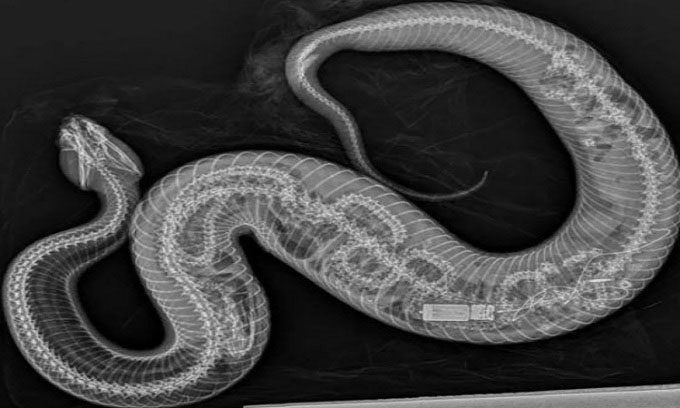Researchers Discover Burmese Python Remains in the Stomach of a Venomous Water Moccasin in Florida.

X-ray image reveals the remains of a Burmese python eaten by a water moccasin. (Photo: Miami Zoo)
Miami Zoo made a surprising discovery when they were unable to locate a Burmese python they had been tracking in Florida. Instead, they found a native water moccasin containing the python’s remains and a tracking device in its stomach. The X-ray shared by the zoo shows the python’s spine had been digested, with the tracking device clearly visible inside the snake’s body. The imaging also revealed that the Burmese python was consumed starting from the tail.
“The python was actually eaten by the water moccasin in the Picayune Strand State Forest in southwestern Florida in May 2021,” said Ron Magill, communications director at the Miami Zoo. “It was being tracked as part of an invasive species study by the U.S. Fish and Wildlife Service and the U.S. Geological Survey in the Greater Everglades system in South Florida. By implanting a transmitter into the python, researchers could learn about their movements in hopes of finding better solutions to control this invasive species.”
The Miami Zoo described the incident as a way in which native species respond to the invasive python threat. The Burmese python is a large non-venomous constrictor present throughout the Everglades ecosystem, posing a threat to native wildlife. From July to September 2020, researchers captured and implanted tracking devices into Burmese pythons before releasing them 24 hours later. Most capture sites were located in the low wetlands within the Picayune Strand State Forest, part of the Big Cypress National Preserve.
The research team monitored the pythons 1 to 2 times a week, including a 10-month-old female python that was swallowed by the water moccasin. They are continuing to study changes in the diet of native animals due to the impact of invasive species in Florida.





















































